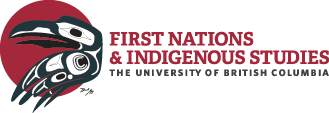Gustafsen Lake
…would assemble every summer at a specific site near Gustafsen Lake, or Ts’Peten, to conduct the Sundance. The site was in ancestral Secwepemc territories and was prepared and respected as…
Oral Traditions
…anyone who misbehaved, resulting in a number of distinct geological formations throughout S’olh Temexw (or Stó:lō territory). Xe:xals also rewarded individuals who showed exemplary behaviour by turning them into valuable…
Aboriginal Fisheries in British Columbia
…capacity of the camp, of the number of children that extended families had, of the number of fishing rocks that were accessible according to the varying levels of the river…
Indian Status
…band, and their registration number. “Status Indians” are wards of the Canadian federal government, a paternalistic legal relationship that illustrates the historical imperial notion that Aboriginal peoples are “children” requiring…
Marginalization of Aboriginal women
…women into a restrictive binary based on European patriarchal values. If a woman could not be virtuous by strict Victorian standards, which, as Green points out was nearly impossible, she…
About Sovereignty Performance
…City, and to challenge the public. I wanted people to walk by, ask questions and even take part. The public reception was very positive in person! There were a large…
Community & Politics
…Lake standoff occurred in 1995 near Williams Lake, B.C. due to a land dispute between First Nations Sundancers and an American rancher. A peaceful protest quickly escalated into a controversial…
Union of British Columbia Indian Chiefs
…serving as a source of information for bands across the province, and building capacity for Aboriginal communities.2 The UBCIC also holds a special consultative status with the Economic and Social…
Bill C-31
…“Real” Indians and Others: Mixed-Blood Urban Native Peoples and Indigenous Nationhood. Lincoln: University of Nebraska Press, 2004. Royal Commission of Aboriginal Peoples, “Indian Act: Indian Women,” in Report of the…
Sixties Scoop
…was one of these areas.2 In 1951, twenty-nine Aboriginal children were in provincial care in British Columbia; by 1964, that number was 1,466. Aboriginal children, who had comprised only 1…

